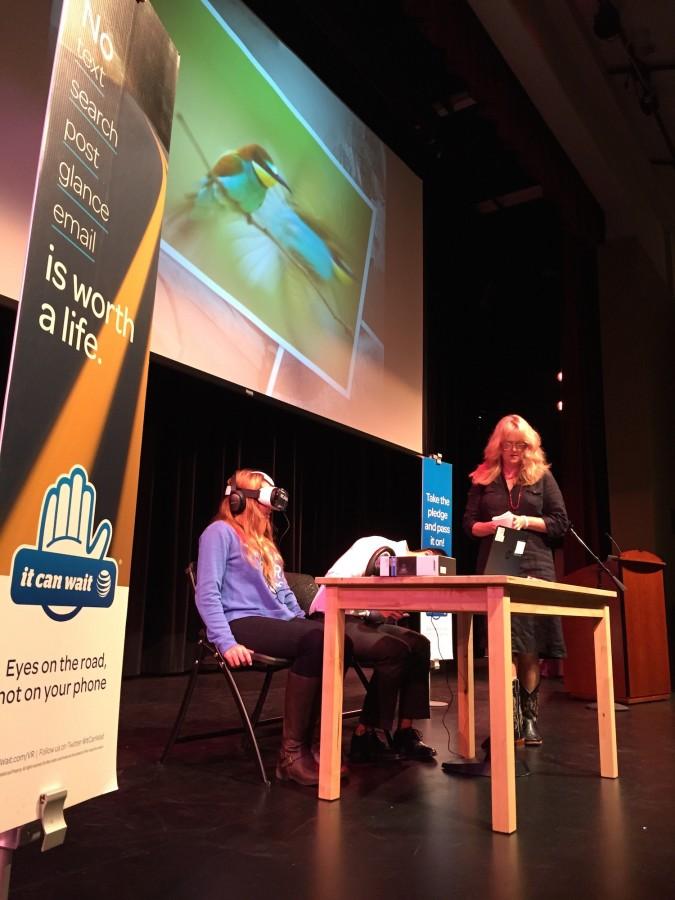‘It Can Wait’: Assembly raises awareness for texting and driving
Drivers and passengers alike are educated on the dangers of texting and driving through AT&T campaign.
Freshman Cat Tseyref uses virtual reality headset to experience a simulation of a texting and driving accident.
September 18, 2015
The audience was brought to tears during a school assembly this morning after viewing an eight-minute documentary about teens who had been involved in texting and driving accidents.
“I cried because all I could think of was my sister who just left for college and the girl in the documentary died because she read a text from her sister,” junior Delaney Moslander said. “That just broke my heart because I could never imagine going through that with my sister.”
Seven in 10 people engage in smartphone activities or apps while driving, according to a survey commissioned by AT&T, who presented this morning’s assembly.
“It’s an easy message to get behind,” Daren Chan, Area Manager for External Affairs at AT&T said. “It’s an easy message to cover, and the hope is that everyone can really take it to heart.”
Volunteers also participated on stage in virtual reality simulation activities with special effect headsets and steering wheels.
“The simulation shows you how you can’t focus on driving while you are texting,” senior Sarah McCarthy, who was pulled over by police for driving too slowly in the simulation, said.
An accident is 23 times more likely to occur during texting and driving, according to Virginia Tech Transportation Institute.
Audience members exhibited behaviors of discomfort by laughing during the simulations, while participants on stage gasped and reacted to the accident simulation technology.
“Anyone that was up here doing the simulation gets a full understanding of how important it is,” Chan said. “Once that happens, the laughter goes away and it becomes a lot more serious.”
Presenters advocated passengers to speak up when their drivers are jeopardizing their safety.
“You might know someone who is doing it,” Chan said. “You might be in a car with someone who is doing it and it may be out of your control until you say something.”
Presenters also encouraged smartphone users to download behavior modification software such as AT&T’s Drive Mode app that sends automated responses to senders of incoming texts that the driver will wait until it is safe to respond.
“When you’re in the audience, you’re just looking to see if they’re going to text and drive,” McCarthy said. “But when you’re in the simulation, you’re the one that has to choose.”











Noa Oberman • Sep 24, 2015 at 10:05 pm
beautifully done, my tater tot
Steve Nuzzo • Sep 21, 2015 at 11:04 am
Extremely well written article on a topic of vital importance.